From bunny ears to the middle finger, these hand gesture meanings have complicated backstories

Thumbs-Up: The Fascinating Origins of Everyday Hand Gestures


Handshake
Let’s take our history of hand gestures back to the basics, starting with the good ol’ handshake. Whether you’re greeting someone for the first time, closing a deal or making amends, shaking hands is usually the go-to gesture. Handshakes say a lot about you, but if you think about it, shaking hands is a little weird. Who decided on this customary gesture, anyway?
“This is one gesture whose meaning is fairly universal across cultures,” Brewer says.
As it turns out, the handshake has been around for thousands of years. One of its earliest depictions in art is from the 5th century B.C. Greece, and Homer mentioned it in The Odyssey a century or two later. There are a couple of theories about its origin. According to Brewer, a raised hand can symbolize violence, like a slap, or goodwill: Showing an open palm while extending your hand meant that you didn’t intend violence, and weren’t carrying a weapon. The clasping and shaking motion further symbolizes good faith and a bond.
Later, 17th-century Quakers used the handshake in place of bowing, as a way of showing that everyone was equal. By the 18th and 19th centuries, the handshake had spread throughout European and American society as a standard form of greeting and agreement, reinforced by its use in business transactions and etiquette guides. Now the handshake is a symbol of trust, greeting, and agreement, eventually spreading across cultures worldwide.

Waving
Ever found yourself awkwardly waving at someone who wasn’t even looking at you? Congrats, you’re continuing a proud, albeit embarrassing, human tradition!
“Hand waving is one of the earliest and most recognized hand gestures in human civilizations,” Brewer says. “It’s a very natural way of calling attention to yourself.”
In fact, in cave paintings from 35,000 years ago, drawings show what scientists think is hand waving. This universal gesture was used as a greeting and a way of showing that you weren’t holding any weapons—ideas that still work today. As society evolved to be more polite, hand gestures became an important part of good etiquette, Brewer says. Waving evolved alongside gestures like bowing and handshakes as public niceties.

The middle finger
When you think of the cultural significance of gestures, you probably don’t immediately think of the middle finger. But as one of the most, if not the most, offensive hand gestures, it’s no surprise that its origin is also vulgar. The middle finger gesture, historically known as digitus impudicus (impudent finger), dates back to ancient Greece and Rome, according to A Cultural History of Gesture. It was basically the ancient world’s way of saying “screw you” by flashing a phallic symbol (because, of course, it had to be about that).
“Humans are a very creative species, so it’s not surprising that we use hand gestures as a way to insult people without actually saying it,” Brewer says.
Greek comedians loved it for a cheap laugh, and Roman citizens used it as a top-tier insult. Fast-forward a couple thousand years, and the middle finger is still going strong, proudly flipping off authority figures everywhere. So next time you throw one up, just know: you’re participating in a grand, rude tradition that’s older than most countries. Its earliest documentation in the United States was in 1886, when a pitcher for the Boston Beaneaters “flipped the bird” in a photograph with the team’s rivals, the New York Giants.
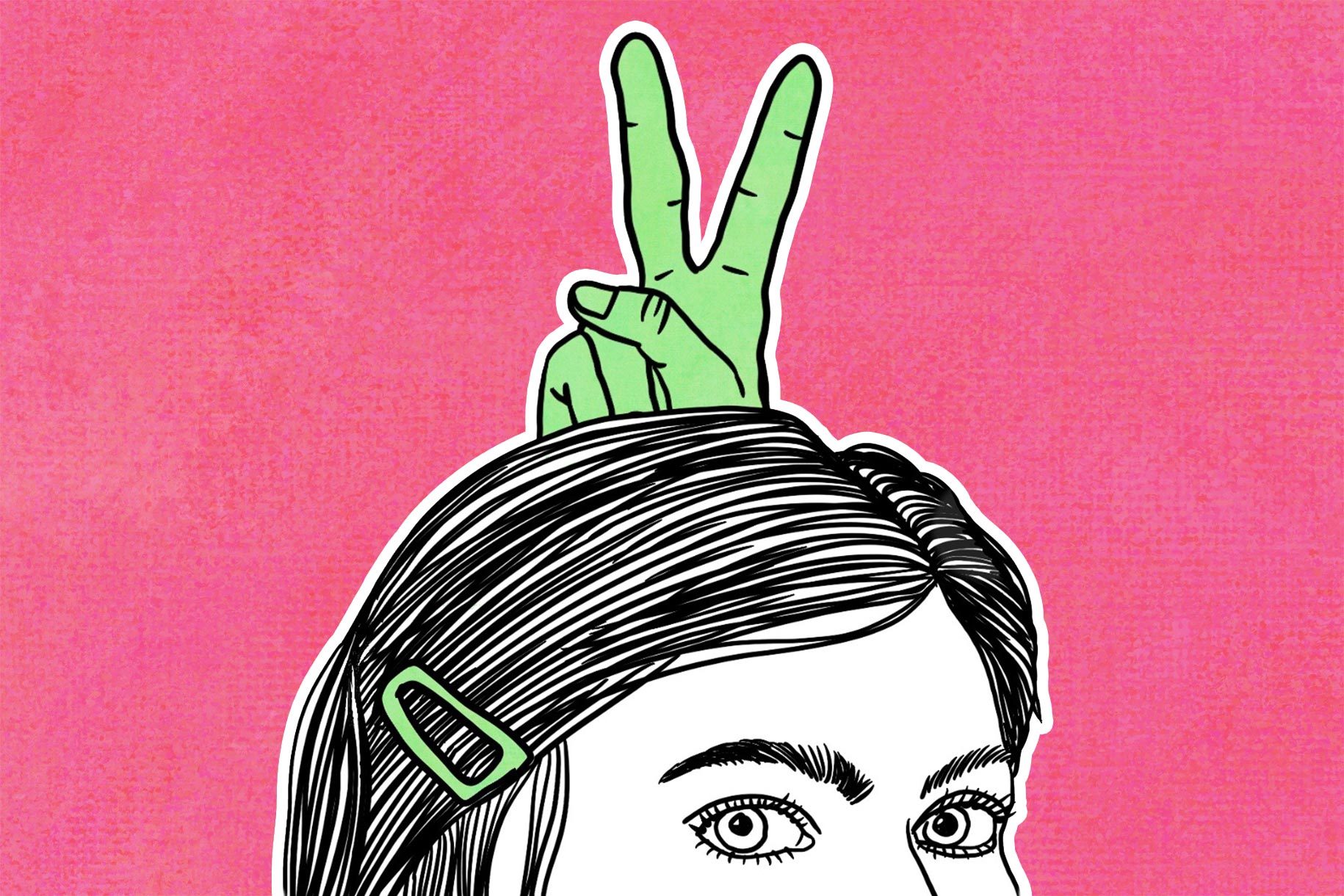
Bunny ears
Putting two fingers up in the shape of a “V” behind your friend’s head (aka bunny ears) makes for a great photobomb, but the cute hand gesture has a surprisingly dark origin. In the Middle Ages, the gesture was used to mock enemies by symbolically giving them not ears but horns—a sign of foolishness or even devilry, according to a paper published in Qualitative Sociology.
This hand gesture meaning also symbolizes donkey ears, which was another common insult in Medieval times. (Think of another word for donkey to get the full impact of the insult.) But there’s a darker meaning as well, according to a 2006 research paper: They were also called “cuckold horns” as a way to shame a man whose wife had cheated on him.
“This is a good example of how complex and multilayered hand gestures can be,” Brewer says. Today it’s mostly seen as just a joke, but even then it can be a subtle way of making someone look silly or teasing them.
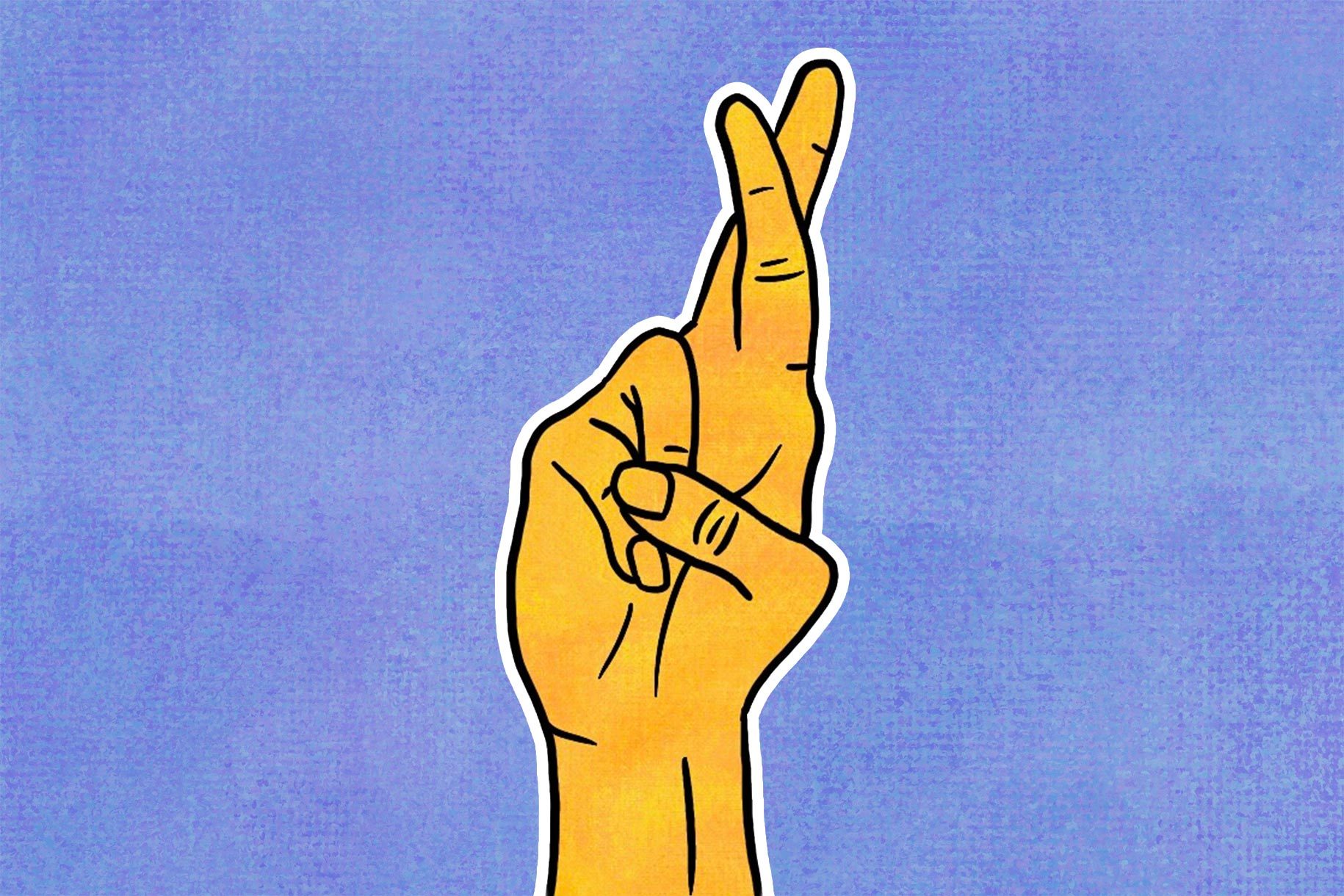
Crossed fingers
How many times have you crossed your fingers when hoping for something to happen? Or maybe you crossed them behind your back when making a promise? Either way, people have been doing this for centuries. There’s a popular myth that involves ancient pagans linking pinkies at a secret wish party, giving rise to the idea of crossing your fingers for luck. Though the gesture probably didn’t start with that, it definitely picked up steam in medieval Europe.
According to A Cultural History of Gesture, people back then were big fans of anything shaped like a cross. So crossing your fingers was a low-key version of waving a crucifix around. It was also used as a way to quietly summon divine backup without causing a scene—for those times when someone needed a little miracle but didn’t want everyone to know they were begging for it. Fast forward a few hundred years, and here we are, still superstitiously crossing our fingers under the table before job interviews or first dates, hoping that the universe is still listening.
“It’s also used as a way to show empathy to another person,” Brewer says. As in, “I’m sending you good luck vibes!”

Thumbs-up and thumbs-down
We’ve come to know and love the thumbs-up and thumbs-down emojis, but these hand gestures haven’t always been so innocent. A popular origin story says the thumb gestures were originally used in ancient Rome to determine whether a gladiator should live or die. It’s true that deciding a gladiator’s fate involved a thumb gesture called pollice verso, though it’s less clear about the exact direction of the thumb, according to Nature Embodied: Gesture in Ancient Rome.
A turned or hidden thumb might mean life, while an aggressive display might signal death. But by the early 20th century, the thumbs-up got a glow-up. Arthur Guy Empey, an American soldier who enlisted with the Brits in World War I, wrote a popular memoir, Over the Top, in which he describes British soldiers using a “thumbs-up” to mean “everything’s good.” This was a major shift toward today’s positive hand gesture meaning. Aviation lore also suggests early pilots gave thumbs-up signals before takeoff, to show they were ready to fly.
“Hand gestures have long been used to show power dynamics, asserting who has the power, and because of that have played an important role in ancient and modern politics,” Brewer says.

High five
Whether you got a promotion at work, won a sports match, or scored an awesome discount while shopping, you’ve probably given or received a high five before. The gesture requires two people to reach up and slap each other’s palms in an act of celebration. Regardless of its popularity, no one really knows who to credit the gesture to—but we do know it’s likely the creation of an athlete in the late 1970s.
The most widely accepted story traces the high five back to a baseball game on October 2, 1977, when Los Angeles Dodger Glenn Burke raised his hand high to greet teammate Dusty Baker after a home run. Baker, sensing the vibe, smacked Burke’s palm, and history was made. Another version of the story credits Derek Smith and Wiley Brown, basketball players at the University of Louisville, for inventing the gesture during the 1978–79 season, after upgrading a “low five” into a “high” one. Regardless of which team you root for, the high five’s energy quickly spread across sports and everyday culture, becoming the go-to move for shared wins and good vibes.
“The high five is also a great way to share excitement, congratulations or happiness while still maintaining a socially acceptable distance,” Brewer adds.
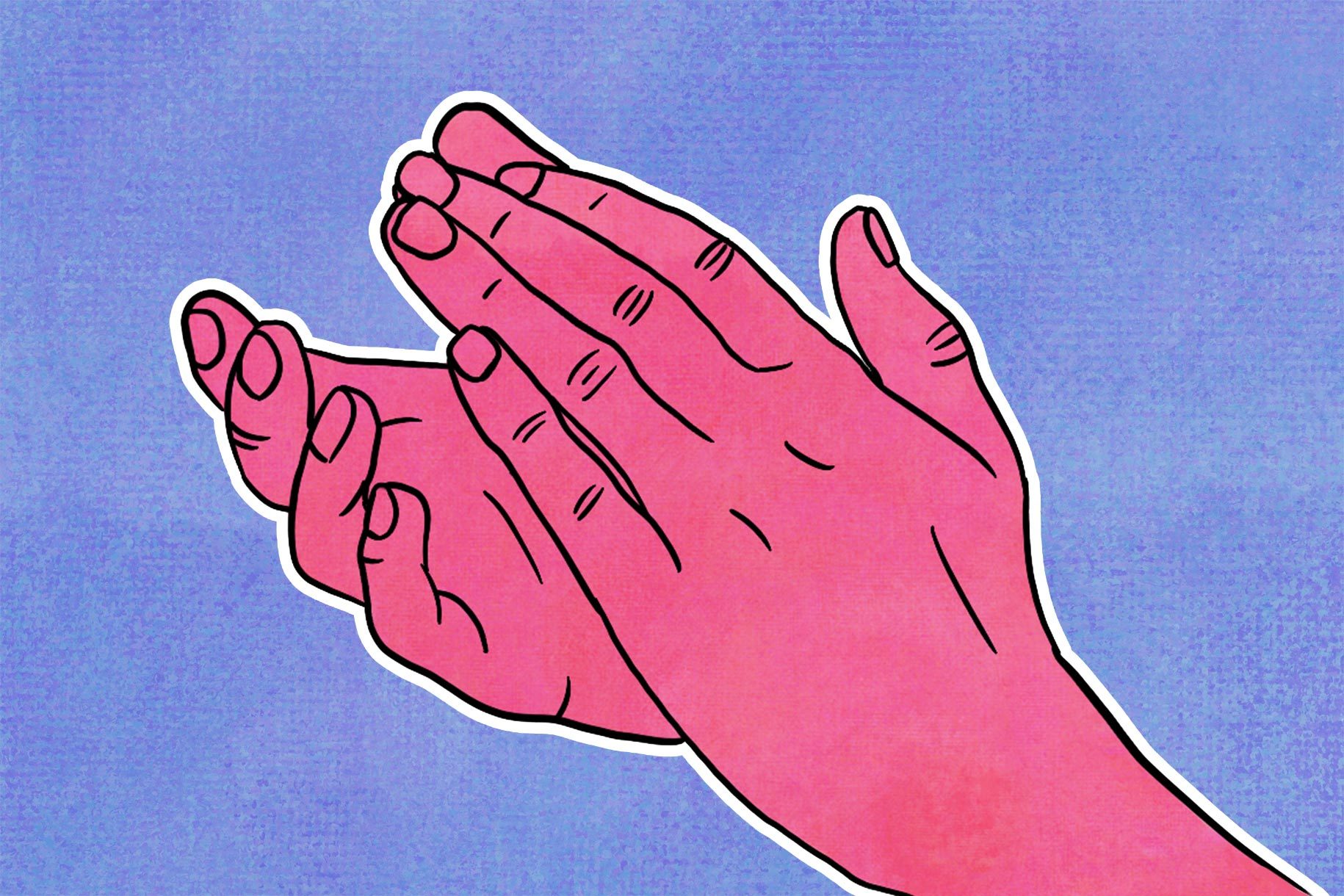
Clapping
Clapping, of course, signifies approval or praise. Whether it’s clapping after a show, speech or safe plane landing, it’s often considered rude not to do so. “This is one of those hand gestures that has likely existed since the beginning of human communication,” Brewer says, so it’s hard to say exactly when it started. But back in ancient Rome, clapping was so ingrained that Roman theaters would hire professional “clappers” (called laudatores) to make sure the audience sounded pumped.
And Roman politicians were basically obsessed with how much noise they got when they strutted into a public arena. Applause was so highly respected that it was essentially used as a way to collect data and determine leadership value, according to an Italian history scholar. Even the Bible gives clapping an ancient shoutout, tying it to joy and celebration. So next time you’re at a concert or even clapping after a plane lands (you know who you are!), just remember: you’re carrying on thousands of years of epic hand-slapping tradition.
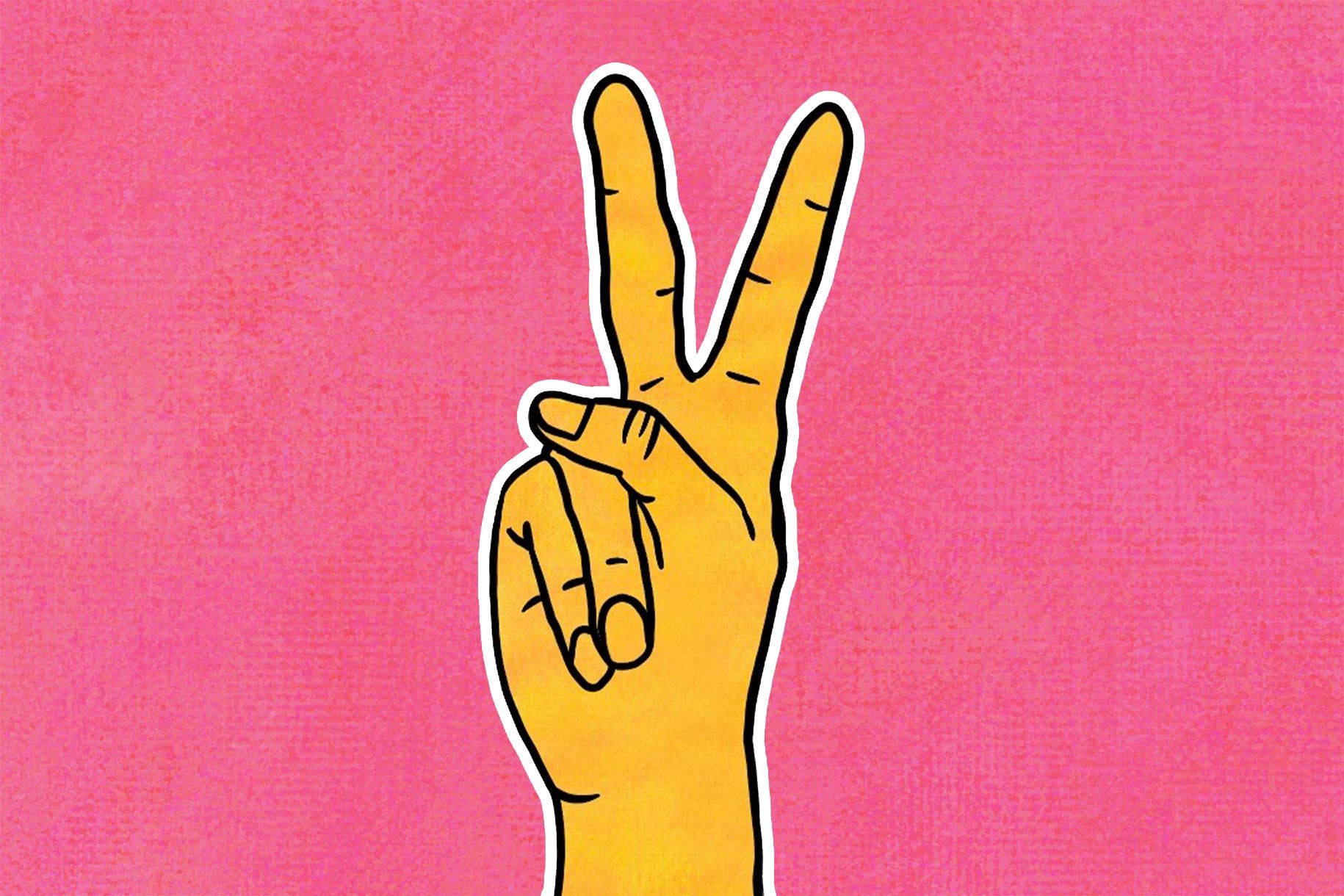
V sign
Two fingers up can be a peace or victory sign, but if you’re in the U.K. it really matters which way your palm faces. Facing your palm toward you, showing the receiver the back of your hand, is a major insult. Historical rumors say it started when English archers taunted the French at the Battle of Agincourt by flashing their two intact fingers. That symbol was a nod to the idea that when the French would capture British archers, they would cut off their index and middle fingers so they couldn’t draw a bowstring. But this epic story doesn’t have much historical backing.
What is true is that during World War II, Winston Churchill gave the V sign its legendary status. Facing the palm outward, Churchill used it to rally the Allies with a strong, silent “victory.” Fast forward to the 1960s, and suddenly everyone’s flashing the V—but now it’s less about beating the enemy and more about beating the system. American and British youth turned it into a peace sign during protests, giving it the chill, love-everybody vibe we know today.
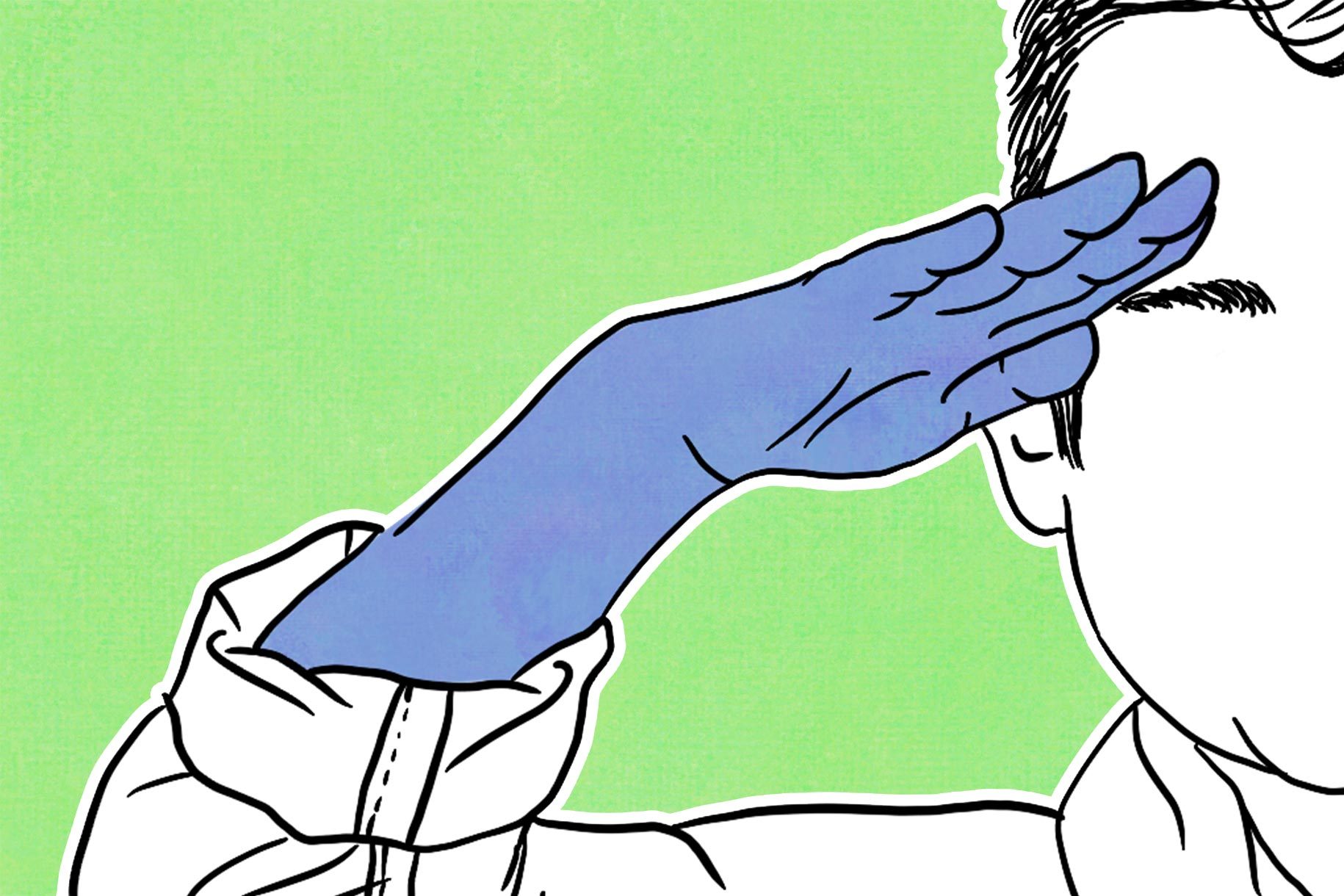
Salute
Ever wonder why a crisp salute feels so serious? Turns out, you’re invoking Middle Age warfare. Knights would lift the visors of their helmets to show their faces to friends and, more importantly, prove they weren’t about to stab anyone. It was their way of saying “Hey, I’m friendly—and totally not armed!” As helmets faded from fashion, tipping or removing a hat became the cool move to show respect.
Fast forward to the early 1800s, and military folks thought, “Why not skip the whole hat thing and just go straight for the head?” So by about 1820, the formal hand-to-forehead salute became official in armies across Europe and America as a way for service members to show respect. These days the gesture has moved into general use as people use it to genuinely offer respect, or sarcastically when someone is being too authoritarian.
“Hand gestures themselves stay mainly the same but the meaning evolves over time,” Brewer says.

Sign of the horns
Before we jump into this one, it’s important to note that as far as hand gesture meanings go, the sign of the horns has a lot of possible origins. The hand gesture is made when you hold up your pinky and index finger and hold down your middle and ring fingers with your thumb. This isn’t to be confused with the “I love you” symbol in American Sign Language, which requires the thumb to also be out.
The sign of the horns is one of the most iconic gestures in rock and metal culture today. But its roots go much deeper than stadium concerts. Ronnie James Dio famously popularized the gesture in the late 1970s, explaining that he borrowed it from his Italian grandmother, who used the “corna” hand sign to ward off the “evil eye.” Before Dio, however, the gesture has a long history in Mediterranean folklore, where it was believed to offer spiritual protection. While pop culture occasionally links the gesture to Bram Stoker’s Dracula (1897), academic research confirms that the “horns” hand sign predates the novel by centuries.
In short: metal didn’t invent it, but it sure made it loud.
About the expert
|
Why trust us
At Reader’s Digest, we’re committed to producing high-quality content by writers with expertise and experience in their field in consultation with relevant, qualified experts. We rely on reputable primary sources, including government and professional organizations and academic institutions as well as our writers’ personal experiences where appropriate. We verify all facts and data, back them with credible sourcing and revisit them over time to ensure they remain accurate and up to date. Read more about our team, our contributors and our editorial policies.
Sources:
- Mick Brewer, PhD, a professor of communication studies at Lincoln University in Missouri and the author of Critical Interpersonal and Family Communication Pedagogy; phone interview, Apr. 25, 2025
- University of Groningen: A Cultural History of Gesture
- Robbins, I. P.: Digitus Impudicus: The Middle Finger and the Law
- Qualitative Sociology: “Unspoken Diversity: Cultural Differences in Gesture”
- Huntington Library Quarterly: “Why Do Cuckolds Have Horns?”
- Anthony Corbeil: “Nature Embodied: Gesture in Ancient Rome”
- ESPN: “The wild, mysterious history of sports’ most enduring gesture”
- Ontrato Agata: “Whistles, Applause and the Welcoming of Roman Politicians
- Oxford Reference: “V sign”
- US Army Quartermaster Museum: “Origin of the hand salute”
- Sapiens: “Is a Hand Wave a Universal Greeting?”


















